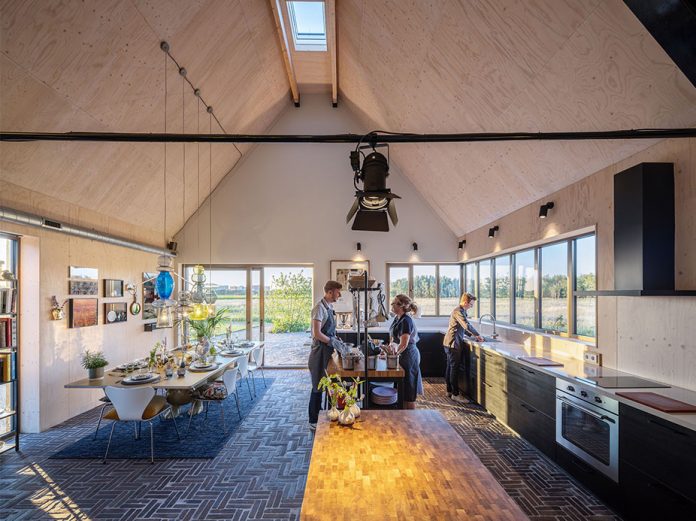Villa Vught – Mecanoo Architecture
Architects: Mecanoo
Size: 683 m2
Status: Completed
Project Design: 2016 – 2018
Project Realisation: 2018 – 2019
Client: Private
Images: Ossip Architectuur Fotografie
About Mecanoo
Officially founded in Delft in 1984, Mecanoo is made up of a multidisciplinary staff of creative professionals from 25 countries. The team is formed by architects, engineers, interior designers, urban planners, landscape architects, and architectural technicians.
The company is led by creative director/founding partner, Francine Houben, design and research director/partner Dick van Gameren, and technical director Friso van der Steen.
The company focuses on designs realized with technical expertise and a great focus to detail. They design a great variety of projects from single houses to skyscrapers, schools, theatres and libraries, museums, hotels and even a chapel.
The Villa in the Dutch countryside near Vught gives a contemporary twist to the local farmstead typology. Traditionally, the Dutch ‘hoeve’ is an ensemble of farmhouses and living quarters loosely clustered around a courtyard. The central open space is protected, yet open to the surrounding landscape. This spatial arrangement guided the design of the Villa.
The Villa’s functions are distributed within three distinct volumes, shaped to resemble the vernacular of a small village. The two lower volumes are shaped like typical gabled barns directly connected to the surrounding gardens. The higher volume captures the view of the wide landscape and forms a striking contrast with the lower buildings.
Functionality
The tallest element, the most prominent building, contains the master bedroom on the ground floor, children’s rooms on the upper floors and a roof terrace at the top. Of the two barns, one is furnished as a living room, kitchen with dining area and a large veranda on the south-west side, with a workspace and playroom on the first floor. The other barn features a cooking studio where up to twenty people can participate in culinary classes, workshops and team-building activities led by the client. A garage, storage area and a guest suite on the first floor can be found next to the studio. Large sliding doors in the center can be opened to reveal an entrance gate to the courtyard.
Maintaining the detached traditional farmstead typology, the company wanted to connect the residential functions. To this end, a half-sunken corridor, concealed beneath a grass mound, links the taller landmark volume with the barn’s living room. The barn which contains the cooking studio and guesthouse is completely detached, maintaining sightlines from the courtyard to the surrounding landscape.
The Dutch ”hoeve” is kept due to the villa’s detailing
The Dutch ‘hoeve’ or farmstead is emulated by the villa’s construction and detailing. The exterior dark bronze anodized aluminum cladding, chosen to seamlessly extend beyond the façade to the rooftop, is profiled to resemble the corrugated iron roofs of nearby farm buildings. The window frames have a lighter bronze aluminum finish, also having a traditional bright color.
Views towards the landscape are carefully framed throughout each building. Windows are placed like picture frames, adorning the walls with selected images of the surrounding farmlands, rather than making wide full-height openings.
Wood – Used for Both Structure and Interior Finish
Wood, a material that is at once sustainable and visually warm, is used for both the structure and interior finish. The three buildings have a cross-laminated timber structure and European silver fir interior surfaces, a type of wood that has an exceptionally smooth and uniform texture.
Relatively little energy is needed for the production and processing of cross-laminated timber in comparison to other solid construction methods. It contributes to sustainable CO2 storage as well. The villa has an Energy Performance Coefficient (EPC) of 0.26 and is heated and cooled with electric heat pumps.






